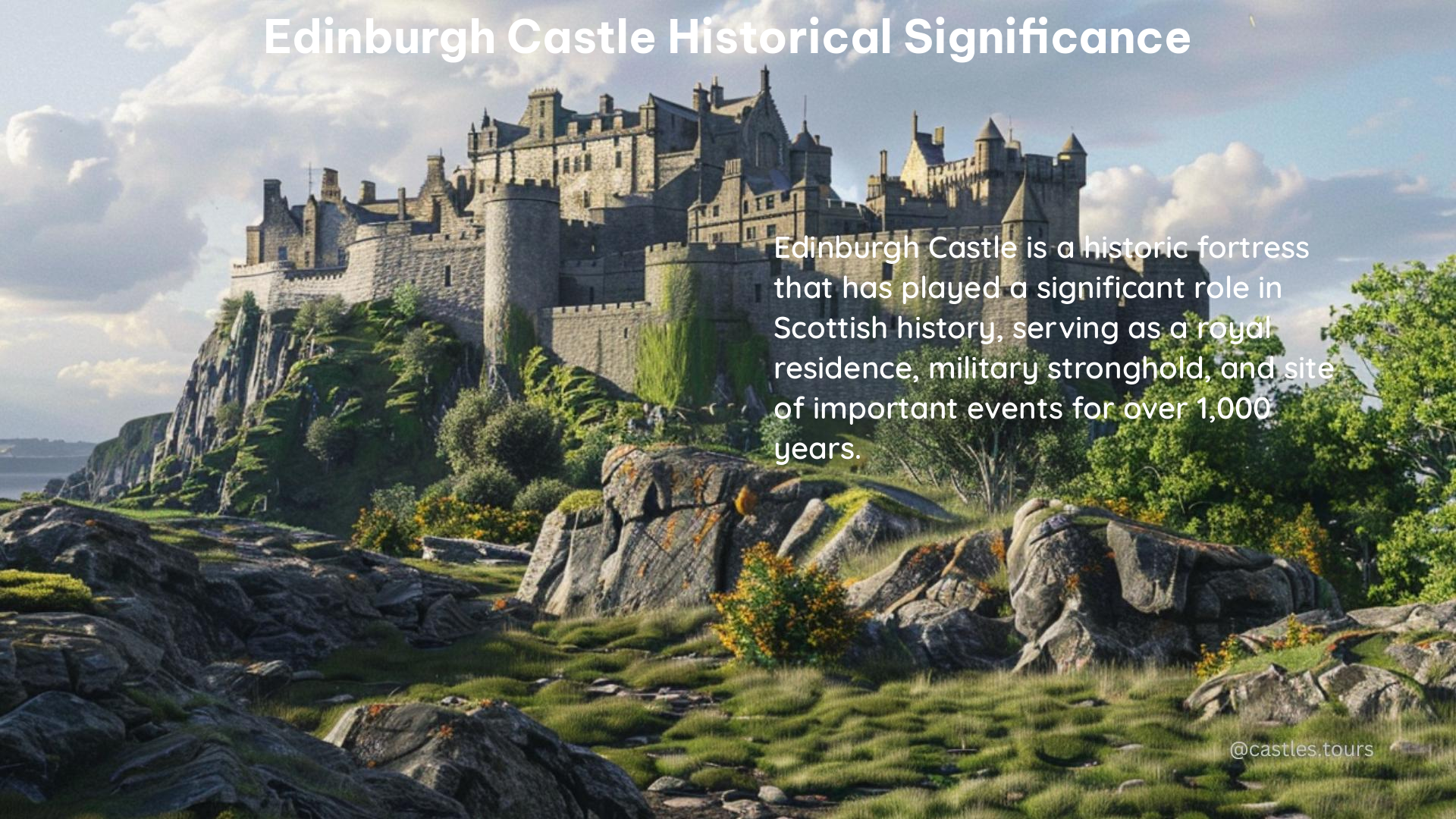Edinburgh Castle, a towering fortress perched atop an ancient volcanic rock, has been a commanding presence in the heart of Scotland’s capital for over a millennium. Its rich history, spanning from the Iron Age to the present day, has made it a symbol of Scottish identity and a must-visit destination for castle enthusiasts and history buffs alike.
Ancient Origins and Royal Residence
The site of Edinburgh Castle has been occupied since the Iron Age, with the first known fortification being Eidyn’s Hill Fort built by the Celtic tribe Votadini around 600 CE. Over the centuries, the castle has served as a royal residence, with the first known king to reside there being Malcolm III Canmore (reigned 1058–93). It remained a royal residence until 1633, witnessing the coronation of numerous Scottish monarchs and serving as a backdrop to many significant historical events.
Military Significance and Sieges

Edinburgh Castle’s strategic location atop a rocky outcrop has made it a formidable military stronghold, and it has endured an astonishing 26 sieges – more than any other place in Great Britain and one of the most attacked in the world. The castle has been involved in many historical conflicts, including the Wars of Scottish Independence and the Jacobite risings, and has played a crucial role in the defense of the city and the nation.
Architectural Landmarks and Cultural Significance
The castle is home to several historic buildings, including the iconic St. Margaret’s Chapel (built between 1130 and 1140), the Royal Palace, and the Great Hall (completed in 1511). These architectural landmarks are a testament to the castle’s rich history and cultural significance. Today, Edinburgh Castle is one of Scotland’s top tourist sites, attracting over 2.2 million visitors annually and serving as an iconic part of the Old and New Towns of Edinburgh, a UNESCO World Heritage site since 1995.
National Heritage and Military Role
The castle is the traditional repository of the Honours of Scotland, the country’s crown jewels, and houses the Scottish National War Memorial and the National War Museum, making it a crucial part of Scotland’s national heritage. Although its military role has diminished, the castle still has a strong connection with the Army, with the Royal Regiment of Scotland and the Royal Scots Dragoon Guards maintaining regimental museums and headquarters within its walls.
Conclusion
Edinburgh Castle’s enduring significance is a testament to its rich history and cultural importance. From its ancient origins as a Celtic hill fort to its role as a royal residence, military stronghold, and national heritage site, the castle has witnessed countless pivotal moments in Scotland’s history. Its iconic presence and the wealth of historical and architectural treasures it contains make it a must-visit destination for anyone interested in the captivating story of Scotland and its people.
References:
– Britannica – Edinburgh Castle
– Edinburgh Castle – History
– Wikipedia – Edinburgh Castle
– Edinburgh Castle – The Castle
– Historic UK – Edinburgh Castle
